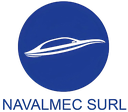Executive Secretary

21st International Symposium on Electrical Engineering
SIE 2025
Abstract
Due to its extensive coastline and geographical location in the Caribbean, Cuba has great potential for the development of marine energy harvesting technologies. However, no concrete devices have been developed that represent a significant energy contribution to national consumption. This research proposes the design of a wave energy system for the coasts of Sardinero (Santiago de Cuba), adapting the UTN device from Argentina. Through genetic algorithms and CFD simulations, a cylindrical buoy with a diameter of 2.35 meters and a height of 3.8 meters, made of CFRP-HDPE composite, was optimized, achieving 25% more efficiency than the original model. The anchoring system with helical piles and magnetorheological damping demonstrated resistance to winds of 120 km/h and 6-meter waves, ensuring stable operation. Economically, the project presents a Net Present Value (NPV) of USD 22,540 and an Internal Rate of Return (IRR) of 22.4%, surpassing the Cuban capital cost (8%). The Levelized Cost of Energy (LCOE) of USD 0.20/kWh makes it competitive against diesel (USD 0.30/kWh). Operational improvements, such as predictive maintenance with AI and strategic procurement, reduced CAPEX by 18% and OPEX by 56%, shortening the payback period to 7.2 years.
Environmentally, it avoids 23 TCO2eq/year and reduces the impact on marine habitats by 80% through low-impact anchors and ROV monitoring. Socioeconomically, it generates 15 direct jobs, electrifies 22 rural households, and contributes to 0.015% of the national energy matrix.
Resumen
Cuba, debido a su extensa costa y ubicación geográfica en el Caribe, posee un gran potencial para el desarrollo de tecnologías de aprovechamiento de la energía del mar, sin embargo, no se han desarrollado dispositivos concretos que representen un aporte energético significativo al consumo nacional. En la presente investigación se propone el diseño de un sistema undimotriz para las costas de Sardinero (Santiago de Cuba), adaptando el dispositivo UTN de Argentina. Mediante algoritmos genéticos y simulaciones CFD, se optimizó una boya cilíndrica de 2.35 m de diámetro y 3.8 m de altura, fabricada en composite CFRP-HDPE, logrando un 25% más de eficiencia que el modelo original. El sistema de anclaje con pilotes helicoidales y amortiguación magnetoreológica demostró resistencia a vientos de 120 km/h y olas de 6 m, asegurando operación estable.
Económicamente, el proyecto presenta un VAN de USD 22,540 y una TIR del 22.4%, superando el costo de capital cubano (8%). El costo nivelado de energía (LCOE) de USD 0.20/kWh lo posiciona como competitivo frente al diésel (USD 0.30/kWh). Mejoras operativas, como mantenimiento predictivo con IA y compras estratégicas, redujeron el CAPEX en 18% y el OPEX en 56%, acortando el período de recuperación a 7.2 años.
Ambientalmente, evita 23 TCO2eq/año y reduce el impacto en hábitats marinos un 80% mediante anclajes de bajo impacto y monitoreo con ROV. Socioeconómicamente, genera 15 empleos directos, electrifica 22 hogares rurales y contribuye al 0.015% de la matriz energética nacional.
About The Speaker

Raciel

Discussion


 Bronze
Bronze